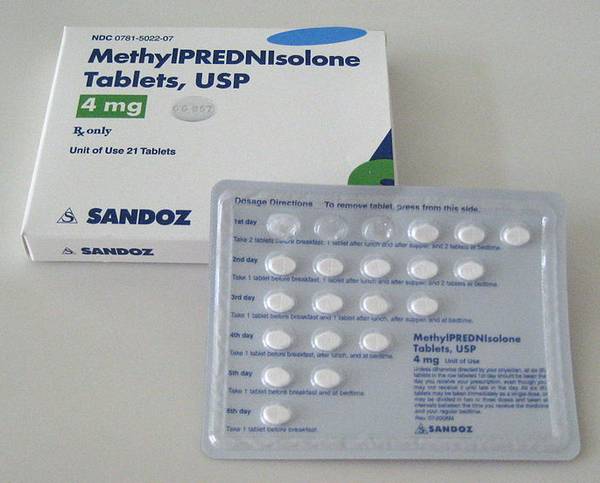Secondary Osteoporosis
There are four main types of osteoporosis: primary; secondary; Osteogenesis imperfecta; and Juvenile.
Primary osteoporosis is the most common form and is largely a consequence of the bone recycling mechanisms becoming less efficient as one ages or goes though the menopause. Osteogenesis imperfecta is also known as brittle bone disease and is genetic in nature. Juvenile osteoporosis affects younger people, and little is known about the manner of causation of the condition.
Here we look at secondary osteoporosis, which is largely a consequence of health conditions and diseases, and the medications used to treat them.

Osteoporosis secondary causes are thought to be responsible for around fifty percent of cases involving osteoporosis in men, and are also found in between 20–30% of postmenopausal women.
Due to the amount of conditions and drugs that are known to be associated with secondary osteoporosis it is beyond the scope of this article to discuss them all (it would need to be about 20,000 words long). Therefore I have given a summary of bone strength; the four main causes of secondary osteoporosis; and information on how bisphosphonates, glucocorticoids, and chemotherapeutic agents affect bone strength.
Bone Strength and Osteoporosis
With regards to osteoporosis, bone strength can be thought of as being the ability to resist fracture.
There are three major factors that affect bone strength:
Bone quantity: Bone mineral density (BMD) is usually measured by DEXA, and is expressed as a T-score based on the SD of a healthy thirty year old. If a person has a T-score of –2.5 or less they are deemed to have osteoporosis. Although BMD is a very important measure for use in assessing the risk of a bone fracture, it is attributable to less than 50% of variations seen in overall bone strength.
Bone quality: this is a function of material and structural bone properties. These include skeletal size and shape; mineral and collagen composition; organization; tissue micro-damage; and microarchitecture.
Bone turnover: Bone undergoes continuous renewal in a process known as bone remodelling. This turnover process allows for the removal of fatigued damaged bone, and the formation of new bone. An imbalance of bone turnover resorption and formation leads to either a gain or loss of skeletal tissue.
Secondary Osteoporosis Causes
There are many conditions other than primary osteoporosis that are known to affect bone strength. Causes include eating disorders, endocrine disorders, drug therapies, gastrointestinal and biliary tract disorders, cancer, renal disease, and immobilization – amongst many others.
The secondary causes of osteoporosis fall into four main classes:
- Bone Mineral Homeostasis Disorders: Rickets, Osteomalacia, hyperparathyroidism, hypogonadism, hyperthyroidism; Type I Diabetes; and Cushing’s disease.
- Collagen disorders: Osteogenesis imperfecta; Scurvy, Marfan syndrome, and Ehlers-Danlos syndrome.
- Bone remodeling imbalances: Renal osteodystrophy, Paget’s disease, Disuse osteoporosis, and osteopetrosis (Sclerosing bone dysplasias).
- Medications: Glucocorticoids, Bisphosphonates, Chemotherapeutic agents, and DMARDs.
It is noteworthy that many of these drugs and conditions are able to have a secondary osteoporosis affect through more than one of the three bone strength attributes mentioned. For example, glucocorticoids are known to increase the rate of bone resorption and at the same time have an impact upon the absorption of calcium.
Medications that Affect Bone Quality and lead to Secondary Osteoporosis
Glucocorticoids
There are many medications that can lead to secondary osteoporosis and it has been well documented that a rapid rate of bone loss is associated with the daily use of corticosteroids for less than six-months.The use of corticosteroid therapy for just a few days affects osteoclasts (bone absorption) and osteoblasts (bone resorption), osteocytes, and affects bone maturation. Osteocytes are differentiated osteoblasts and are the most abundant cell found in the bones. The use of moderate–high glucocorticoids leads to osteocyte apoptosis and a lowering of the overall number of osteocytes. This leads to major changes in bone microarchitecture, and increases the risk of fracture significantly.
Bisphosphonates
Bisphosphonates are oft prescribed as a treatment for osteoporosis, and have been shown to increase hipbone density and reduce the incidence of non-vertebral fractures. It is thought that the prolonged use of bisphosphonates the reason why there is an increased incidence of atypical fractures in the subtrochanteric and upper diaphysis of the femur. Long-term bisphosphonate use is reported to lead to an accumulation of microdamage, and a decrease in bone mechanical properties.
Chemotherapy
The use if chemotherapy is known to lead to a massive increase in the rates of bone loss. It has been reported that this can be higher than ten times the usual rates. The principle reason for the bone loss is through hypogonadism, but the use of chemotherapy is also known to impact bone maturation; toxic effects that directly impact bone tissue have also been reported.
Summary
Secondary osteoporosis is a consequence of health conditions and diseases, and of the medications used to treat them. It is thought to be responsible for fifty percent of the causes of osteoporosis in men. Furthermore, 20 to 30% of postmenopausal women may also have secondary osteoporosis. There are four major classes of the condition: bone mineral homeostasis; bone remodeling imbalances; collagen disorders; and drug related.